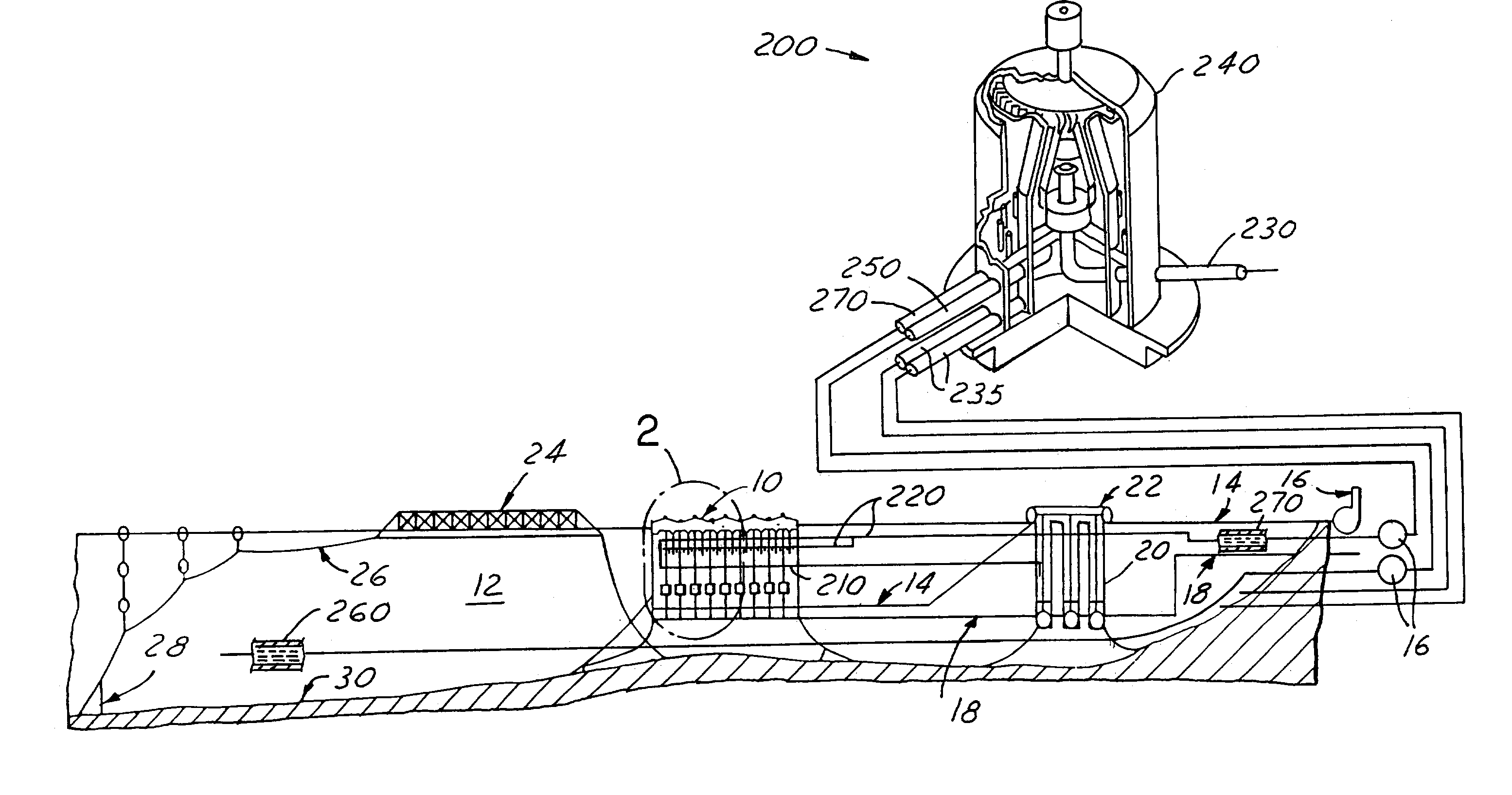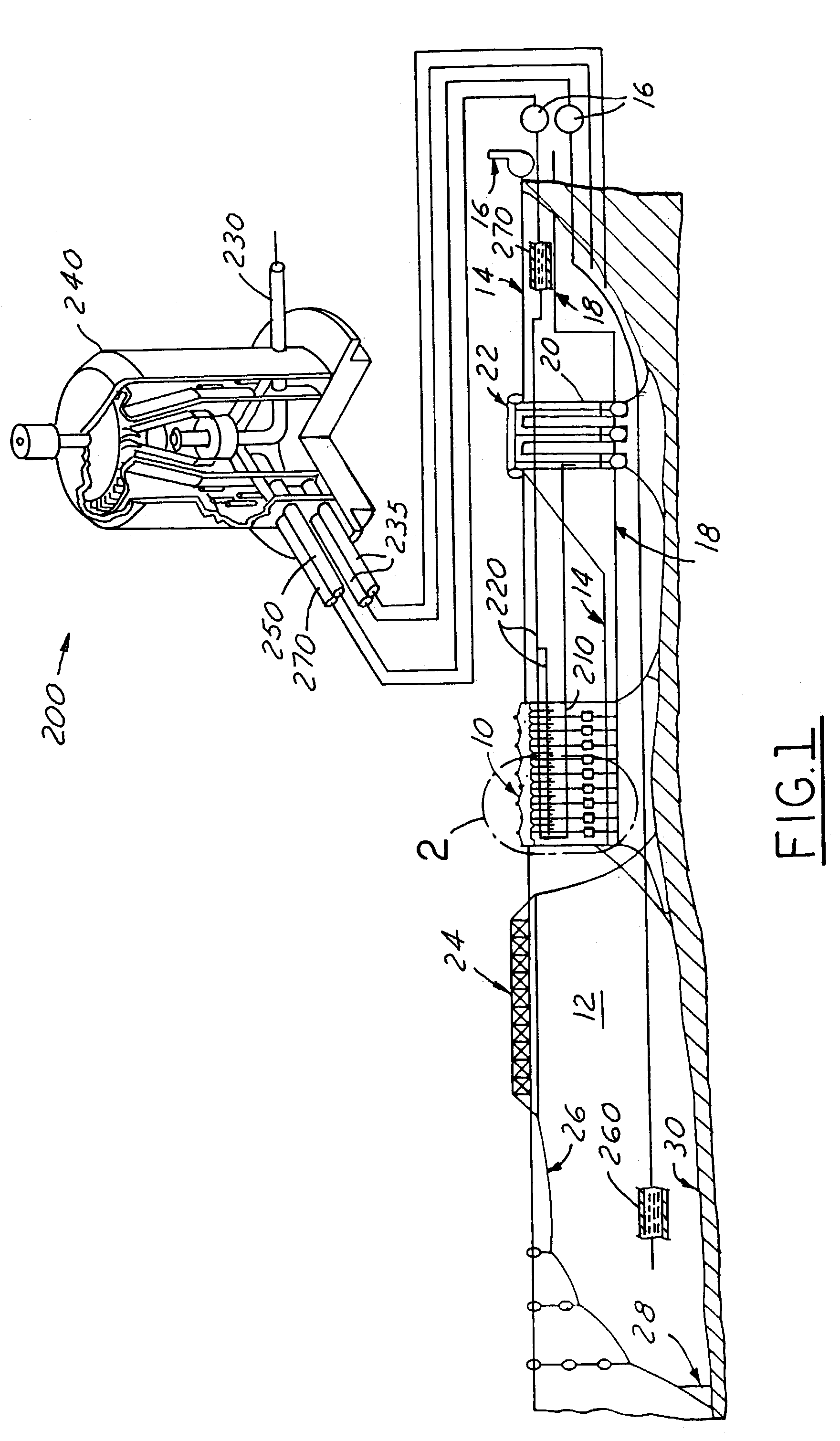Solar thermal energy conversion system
a technology of solar thermal energy and conversion system, which is applied in the direction of refrigeration components, machines/engines, refrigeration machines, etc., can solve the problems of inefficiency of solar distillation design, failure to fully utilize the thermal energy trapped within the confines, and failure of designers to recognize the potential of stored energy to improve the efficiency of energy generating systems
- Summary
- Abstract
- Description
- Claims
- Application Information
AI Technical Summary
Benefits of technology
Problems solved by technology
Method used
Image
Examples
Embodiment Construction
[0021]As seen in FIG. 1, a solar energy conversion system 8 is provided that utilizes a plurality of interconnected solar cells 10 adapted to float over a body of water 12. The body of water 12 may represent salt water or fresh water. Additionally, although the body of water 12 is contemplated to encompass any water mass either natural or man-made, the body of water 12 is preferably one located in a position between ±37 latitudes wherein the energy storage potential of the solar energy conversion system 8 can be fully utilized. When the solar thermal energy conversion system 8 is deployed over a body of water 12 that is subject to wave action, a wave breaker 24 may be employed to protect the solar cells 10 from the waves. Suitable cables 26 and anchors 28 position the system 8 relative to the sea bed 30.
[0022]As seen in FIGS. 2 and 4, each solar cell 10 is made of insulating material, for example, polyurethane foam encapsulated by PVC or the like to preclude attack by salt water. Ea...
PUM
 Login to View More
Login to View More Abstract
Description
Claims
Application Information
 Login to View More
Login to View More - R&D
- Intellectual Property
- Life Sciences
- Materials
- Tech Scout
- Unparalleled Data Quality
- Higher Quality Content
- 60% Fewer Hallucinations
Browse by: Latest US Patents, China's latest patents, Technical Efficacy Thesaurus, Application Domain, Technology Topic, Popular Technical Reports.
© 2025 PatSnap. All rights reserved.Legal|Privacy policy|Modern Slavery Act Transparency Statement|Sitemap|About US| Contact US: help@patsnap.com



